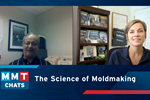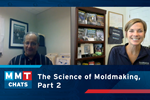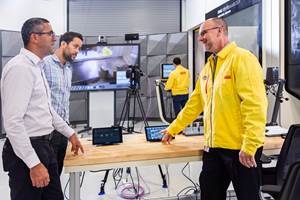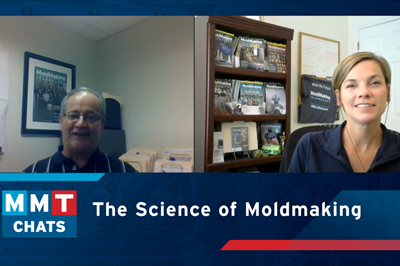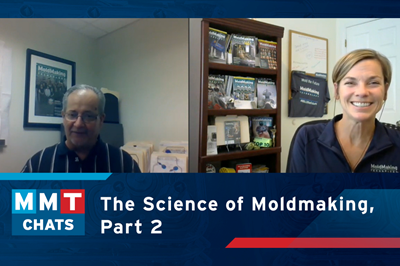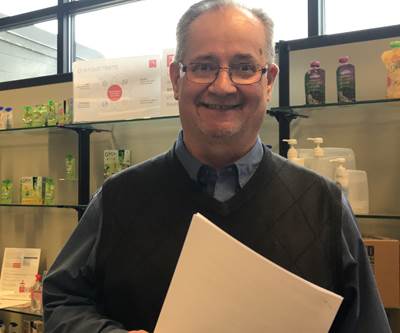VIDEO: How a Pandemic Changed the MoldMaking Training Model
Don Smith of Scholle IPN talks about the COVID-19 pandemic’s impact on how companies approach training through virtual learning and cross-training programs.
The pandemic had an immediate impact on cross-training—between seasoned and next-generation mold builders and across departments, processes and specialties. Here Don Smith, North American tooling manager for Scholle IPN shares seven essential skills and knowledge areas to incorporate into a cross-training program for future mold builders.
Transcript
Christina Fuges
Let's think about COVID and its impact on actual training. One of the big things that I hear a lot is cross-training. You say there are seven key components to a good cross-training program. Can you review those?
Don Smith
The number one thing that I look for is the ability to reverse engineer. For example, I still have 30-year-old molds that need to be repaired and for which I need components, so I look for a tool shop that has the capability to do reverse engineering. From a training standpoint, reverse engineering to the younger generation really helps now you have something that you can use as an example for how we could make it better.
The second thing is that with current software you can take old tools, reverse engineer and then run those through a virtual analysis. You can upgrade and see where you need to components—maybe some better cooling or better waterlines. There is also molding analysis from which you get cycle times and a good expectation of what is going to be coming out of that particular choice.
The third one is mold engineering capabilities. For example, what is the GPM, how much flow, how much dissipation, etc. True engineering functionality that you can incorporate into a mold or component.
Hot runner system knowledge is another as there are many types—conventional cold runners, going hot to cold, going full cold or full hot to valve gates, sequential valve, gates, servo-driven gates.
Then there is measurement on fundamental metrology because if a CMM is not set up correctly, you're going to get, I think it's doing that, but it's really not—so fixturing, how to measure, understanding tangents are all key.
All of this is where cross-training comes into play.
Finally, there is injection mold testing capabilities. For example, going from a first-off tool to check functionality as a baseline process for that particular tool. We'll run it for four hours, pull it apart, make sure there's no wear, etc. Then if all that sounds good, we'll go to a FAT and then we'll start dialing in the process to an optimized process through DOE.
Next we'll run and measure parts before we do any steel adjustments. We use science to optimize the process through software. Then we make our steel adjustments. Now that it's in specification, we send it to any site in the globe.
Basically they run the same testing scheme again and make sure that they can produce the same part within parameters. We also have sensors in place and we run a design of experiments to set our high and low parameters so we know that anything within those parameters on all cavities will be good quality parts.
Christina Fuges
That's tooling 4.0.
Don Smith
That's tooling 4.0.
Virtual training is another change brought on by the pandemic, here are six key components to a quality virtual training the Don shares:
Don Smith
Number one you must build the fundamentals so that the student can go through the online training (videos) and then have an application project. The key to that is online instructors who don't necessarily have to sit there, but it will simulate the real world where they submit the project to a customer for approval.
Making mistakes is key to learning so application projects are also vital to any virtual learning. So the ability to have an online instructor who can provide feedback is important.
Christina Fuges
The application side of the virtual world is really taking the place of the hands-on that you can't get virtually.
Related Content
Making Quick and Easy Kaizen Work for Your Shop
Within each person is unlimited creative potential to improve shop operations.
Read MoreHow to Use Continuing Education to Remain Competitive in Moldmaking
Continued training helps moldmakers make tooling decisions and properly use the latest cutting tool to efficiently machine high-quality molds.
Read MoreThe Role of Social Media in Manufacturing
Charles Daniels CFO of Wepco Plastics shares insights on the role of social media in manufacturing, how to improve the “business” side of a small mold shop and continually developing culture.
Read MoreUnique Mold Design Apprenticeship Using Untapped Resources
To help fill his mold design skills gap, Jeff Mertz of Anova Innovations, is focused on high schools and underprivileged school districts, a school that has lower graduation and college entrance rates. The goal is a student-run enterprise.
Read MoreRead Next
MMT Chats: The Science of Moldmaking, Part 1
MoldMaking Technology Editorial Director Christina Fuges chats with Don Smith, North American Senior Tooling Engineer for Scholle IPN in Northlake, Illinois about the future and science of moldmaking.
Read MoreMMT Chats: The Science of Moldmaking, Part 2
In Part 2 of this two-part MMT Chat, Christina and Don continue their conversation by exploring lean manufacturing and tips on how to attract, train and retain the future workforce.
Read More2020-2023 Editorial Advisory Board: Meet New Board Member Don Smith
The 2020-2023 version of MoldMaking Technology's EAB features a new crew of 12 industry professionals. Here's one of them.
Read More

